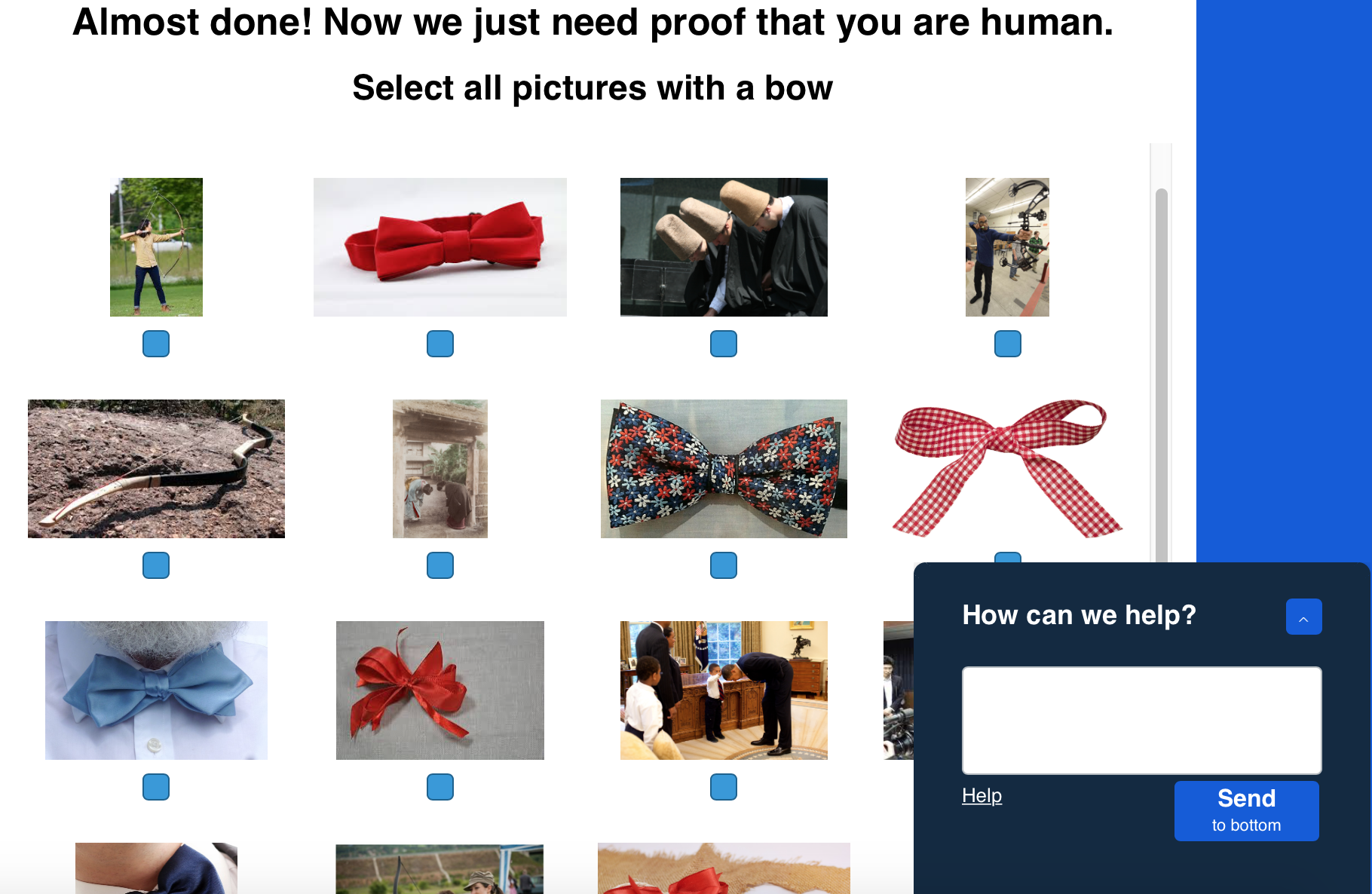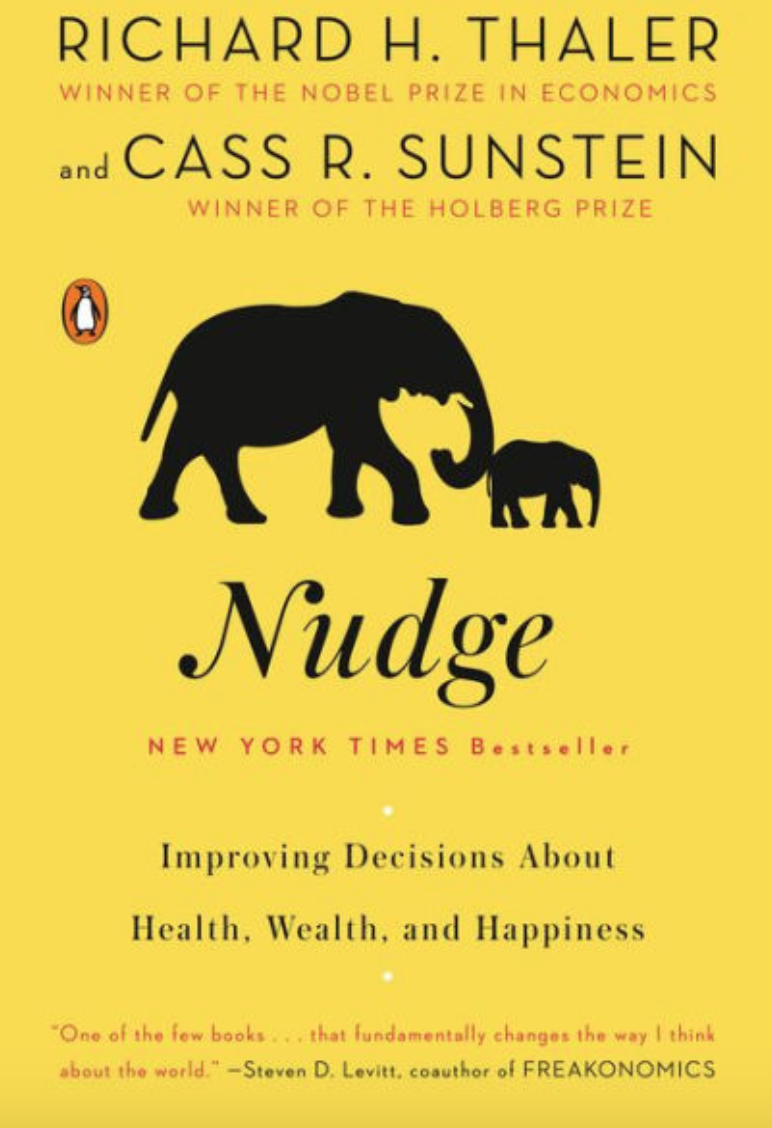
I attempted to play the User Inyerface without wearing my typical critical hat. Knowing it was a game about dark patterns and deception, I tried to get into the mind space of visiting any other site, but that proved to be too challenging. It’s kind of like watching a magician but expecting me not to try and figure out how it’s really being done. No chance.

Why are you looking at this caption? It literally has no purpose.
A couple of pieces that stuck out to me during the game:
- The giant green “NO” button took me a second to hold off clicking it. The use of the colour green, and I actually read it as “GO” the first time through. This set the tone for what to expect and was the exact moment my critical thinking hat went on for good.
- Filling out the email form was an exercise in fastidiousness. There were so many subtle functionalities that were missing and frustrating. Having to select the placeholder text? Excruciating! The age and date of birth not matching? This prevents the classic January 1st birthday entry.
- The captcha pictures were my downfall. The opaque categories were impossible to navigate, and I just couldn’t guess what the designers had in mind when they said “circles” or “checks”. I also had selected the images that weren’t lined up with the right pictures. The spacing between the image and the radio button was very deceptive. After four rounds I gave up as I didn’t see a way out of this infinite loop.
- Having to select a box number by clicking through each number until you get to the one you need? Considering my box number is in the upper three-digits that would take way too long.

Select all pictures with a bow? CMON!!!
This really makes one think about how UI and UX design is made to steer behaviour and leverage human biases for the designer’s benefit (and often customer detriment). Much of these dark patterns are so ingrained in the lives of digital citizens that we don’t even notice them. It’s only when we are presented with something so contrary that we pay attention. The only reason I had any degree of success is precisely because I was keenly aware of how web UX typically looks like, and I actively rejected those intuitions.
Our life is what we pay attention to. The totality of what constitutes what we are and who we will become is the amalgamation of individual moments that are strung together to compile the passing of time as conscious creatures. So how then does attention divert? As Trystan Harris says in his Ted Talk, it is to know how the mind works through persuasion, and marketers have this tune dialled in.
 Richard Thaler, the author of the best-selling book Nudge (2009), won the 2017 Nobel Prize in Economics for his work in Behavioural Science, choice architecture, and decision research. The book is about how no choice is presented in a value-neutral way, and that we are all susceptible to biases. He discusses how the default choice in anything, namely when humans aren’t required to do anything, is so often the choice that is made. I connected this with what Harry Brignull outlines in his article on deceptive UI design, specifically on forced continuity (2011). When a freemium service automatically rolls into a paid service, the action is required to cancel. Businesses understand how busy people are these days and rely on this inaction as revenue. When I think of the number of digital services that I currently subscribe to, it is easy to see how these can become hard to keep track of.
Richard Thaler, the author of the best-selling book Nudge (2009), won the 2017 Nobel Prize in Economics for his work in Behavioural Science, choice architecture, and decision research. The book is about how no choice is presented in a value-neutral way, and that we are all susceptible to biases. He discusses how the default choice in anything, namely when humans aren’t required to do anything, is so often the choice that is made. I connected this with what Harry Brignull outlines in his article on deceptive UI design, specifically on forced continuity (2011). When a freemium service automatically rolls into a paid service, the action is required to cancel. Businesses understand how busy people are these days and rely on this inaction as revenue. When I think of the number of digital services that I currently subscribe to, it is easy to see how these can become hard to keep track of.
It has become an arms race for attention with increasingly nefarious techniques. How about the fact that the default video player in Canvas, the name of which I can’t determine, has a giant play button in the middle of the viewer when a video is not actively playing, yet when the video is being viewed there is no equivalent pause button? One can interpret, then, that the basis for this is to encourage playing a video but to discourage stopping it. A subtle move to hold my attention. This is a classic example of a Thalean nudge that seems minor or innocuous but has implications when scaled up to millions of daily users.
Finally, I want to briefly touch on emotional manipulation like fear, outrage, disgust. These feelings are not a choice that we make, as Harris points out but occur to us through circumstance. This might be why there is a perception of increasing polarization in politics, thanks to the combination of politics, social media, and evolutionary psychology. As far as I can tell, the goals of the persuaders seldom align with those of the persuadees. The ultimate goal of marketers is to get customers to both literally and/or figuratively buy into an idea, and the scary part is they largely understand how consumers make decisions better than consumers do.
References
Brignull, H. (2011). Dark Patterns: Deception vs. Honesty in UI Design. Interaction Design, Usability, 338.
Harris, T. (2017). How a handful of tech companies control billions of minds every day. Retrieved fromhttps://www.ted.com/talks/tristan_harris_the_manipulative_tricks_tech_companies_use_to_capture_your_attention?language=en
Thaler, R. H., & Sunstein, C. R. (2009). Nudge: Improving decisions about health, wealth, and happiness (Rev. and expand ed.). Penguin Books.
